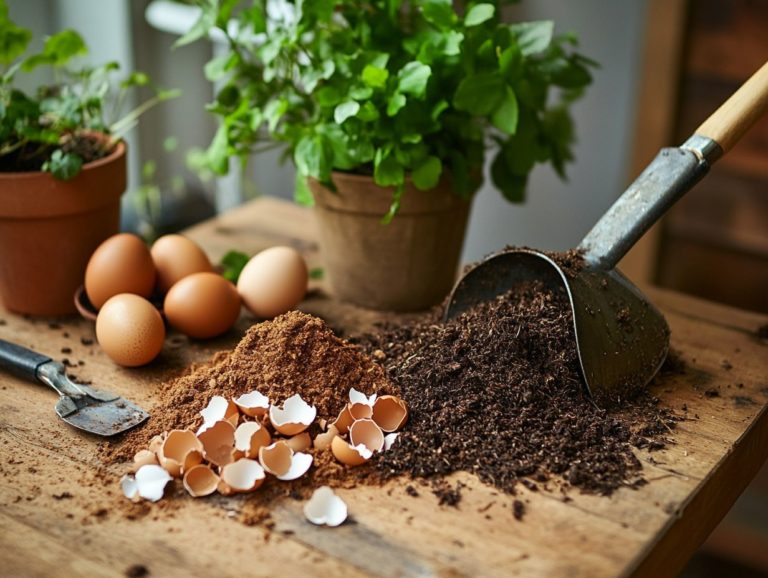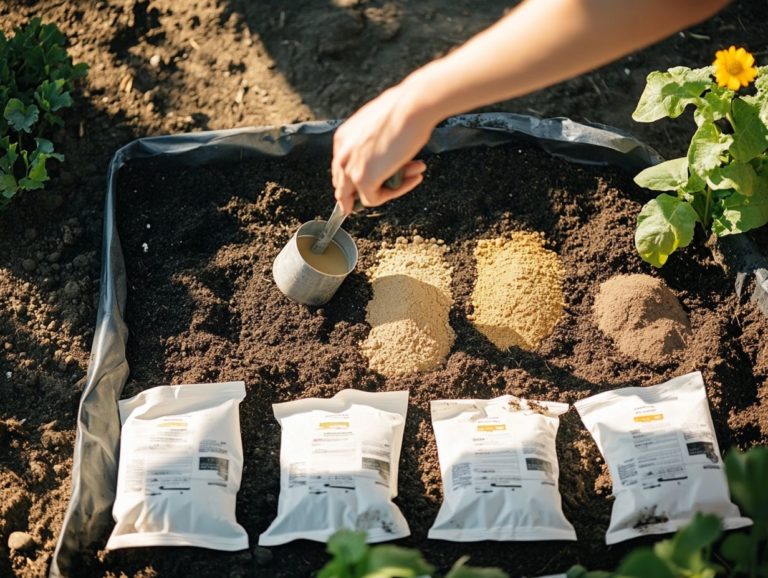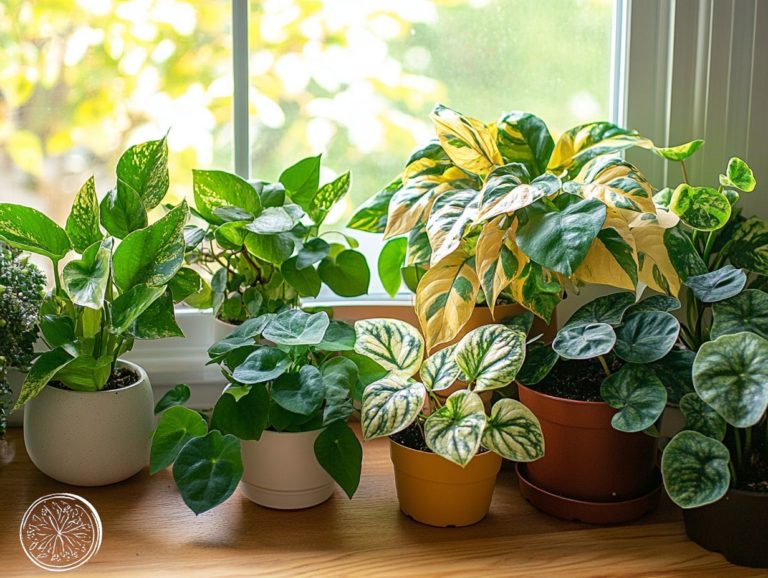How to Mix Your Own Potting Soil
Creating your own potting soil can be rewarding and cost-effective for your gardening needs. It allows you to customize the mix based on the specific plants you re nurturing, giving you complete control over ingredient quality.
This guide delves into the essential components of potting soil. You ll learn how to choose the right ingredients and follow a step-by-step process for mixing your own. Additionally, you ll discover how to test and adjust your mixture for optimal growing conditions.
With straightforward tips for storage and maintenance, you ll be on your way to cultivating a thriving garden with your homemade potting soil!
Contents
- Key Takeaways:
- Why You Should Make Your Own Potting Soil
- Essential Components of Potting Soil
- Understanding Soil Structure and Nutrients
- Choosing the Right Ingredients
- Types of Soil, Compost, and Additives
- Mixing Your Own Potting Soil
- Step-by-Step Guide
- Testing and Adjusting Your Soil
- Tips for Using Homemade Potting Soil
- Frequently Asked Questions
- What are the benefits of mixing your own potting soil and using quality ingredients?
- What materials do I need to mix my own potting soil?
- How do I determine the right ratio of materials for my potting mix?
- Can I add fertilizer to my homemade potting soil?
- How do I mix the ingredients together evenly?
- Can I store leftover potting soil for future use?
Key Takeaways:
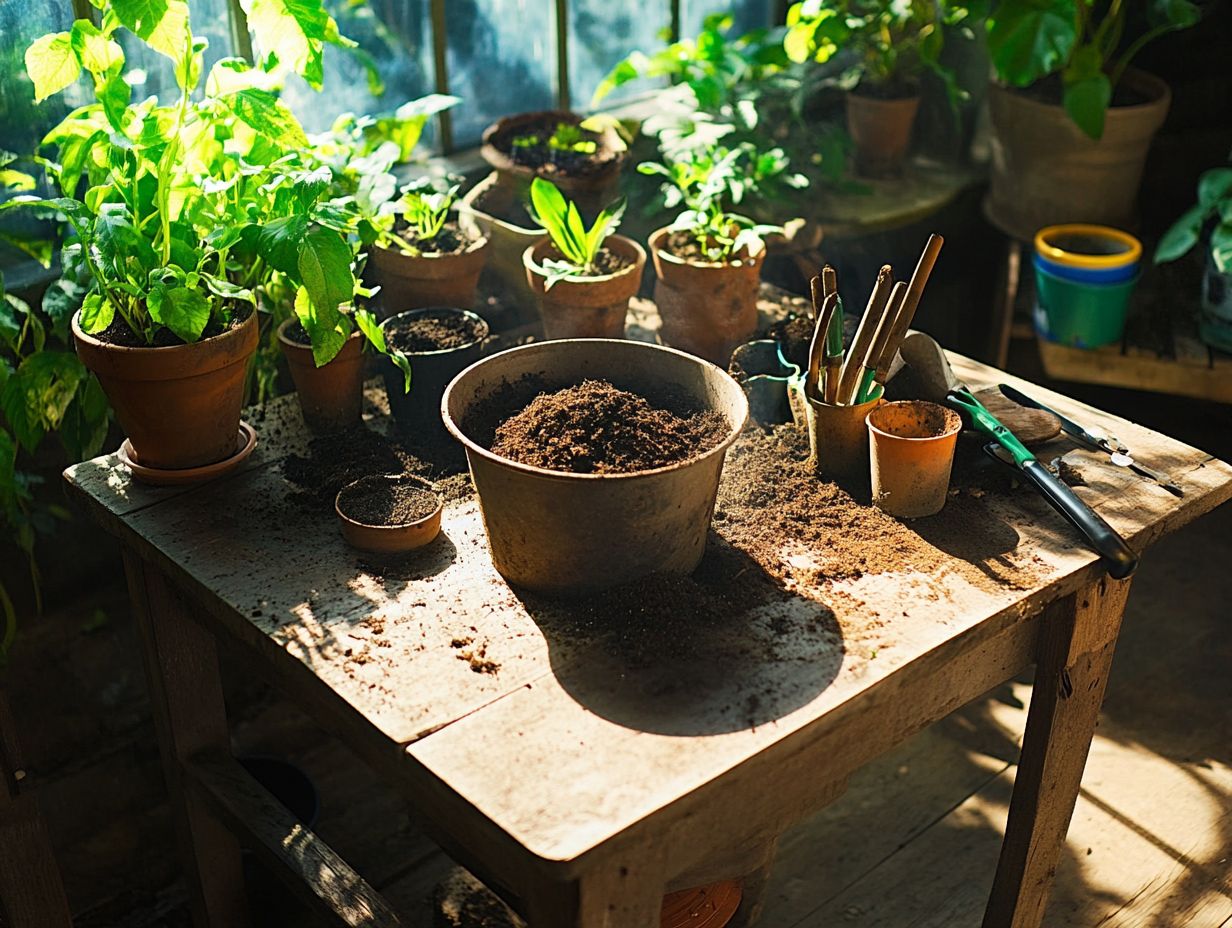
- Save money and customize your potting soil by making it yourself.
- Understand the components of potting soil, such as structure and nutrients, to create a healthy growing environment for your plants.
- Choose the right ingredients for your potting mix, including various soil types, compost, and additives.
Why You Should Make Your Own Potting Soil
Making your own potting soil offers numerous benefits for cost-conscious gardeners and DIY enthusiasts. You can craft a custom mixture that perfectly meets the unique needs of your plants while being budget-friendly compared to commercial potting soils.
This approach gives you complete control over the quality and ingredients in your potting mix. By mastering the art of crafting an effective potting mix, you will save money while enhancing nutrient retention and aeration, both essential for healthy seed germination and flourishing container gardens.
Cost Savings and Customization
Cost savings and customization are compelling advantages of creating your own potting soil. This option appeals to home gardeners and DIY enthusiasts who want to avoid the high prices of commercial potting mixes.
By blending various organic materials such as shredded leaves, well-rotted manure, and affordable compost, along with expanded volcanic rock you can create a soil mix tailored to your plants’ needs. This fosters robust growth and vitality. For instance, using kitchen scraps to make nutrient-rich compost improves soil quality and diverts waste from landfills.
Quality ingredients like perlite, a lightweight volcanic glass that enhances drainage, and vermiculite, which retains moisture and nutrients, can often be found at your local garden center. This hands-on approach not only saves you money but also makes your gardening experience more rewarding.
Essential Components of Potting Soil
Understanding the essential components of potting soil is crucial for crafting a superior medium that ensures excellent aeration, water retention, and effective drainage for your plants, whether they are indoors or in container gardens.
The primary ingredients sphagnum peat moss, perlite, and composted wood chips each serve a distinct purpose in enhancing your potting mix’s overall performance. They contribute to the coarser texture and soil drainage necessary for healthy plants.
By exploring soil-based media and peat-based blends, you can create a balanced environment that promotes healthy seed germination and vigorous plant growth.
Understanding Soil Structure and Nutrients
Understanding soil structure and nutrients is essential for your backyard gardening success. It directly affects the nutrient supply available to your plants and the overall vitality of your potting soil.
The arrangement of soil particles plays a significant role in its ability to retain moisture and nutrients. This ensures that vital elements efficiently reach the roots of your plants.
A well-structured soil enhances cation exchange capacity, which is the soil’s ability to hold positively charged nutrients like potassium and calcium. Incorporate organic matter like compost now to boost your soil’s nutrient-holding power!
Techniques like mulching and crop rotation improve soil health, fostering beneficial microbial activity that aids in nutrient cycling. By emphasizing these practices, you enrich the soil and create a thriving environment for your plants to flourish.
Choosing the Right Ingredients
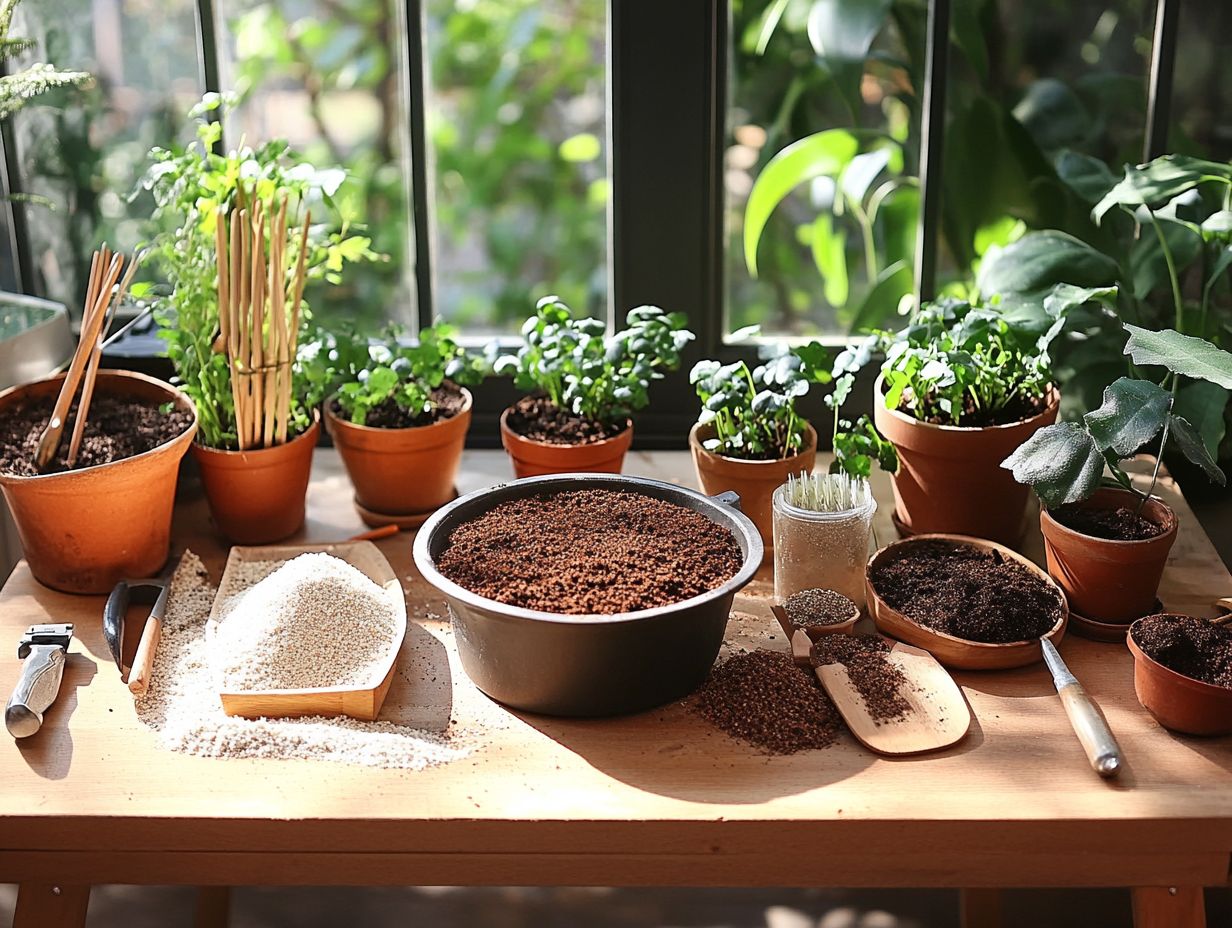
Choosing the right ingredients is key to creating a lightweight potting mix that supports healthy plant growth. It s important to select the types of soil, compost, and additives that cater specifically to your gardening needs.
Making a thoughtful selection sets the stage for your plants to thrive, ensuring the use of quality potting soil tailored to their needs.
Types of Soil, Compost, and Additives
You have an array of soil types, compost, and additives (such as slow-release fertilizer) at your disposal to elevate your homemade potting soil. Consider adding perlite for aeration, vermiculite for moisture retention, and expanded volcanic rock for enhanced drainage.
Each component has unique qualities that contribute to a well-balanced mix. For instance, perlite is lightweight and creates air pockets that promote root respiration. Vermiculite absorbs water and nutrients, keeping them accessible to your plants. Expanded volcanic rock provides excellent drainage, preventing root rot by allowing excess water to escape.
By thoughtfully incorporating these materials, you can craft a custom blend tailored to your plants’ specific needs, enhancing their health and vitality, especially for houseplants.
Mixing Your Own Potting Soil
Mixing your own potting soil allows you to create a customized blend that promotes optimal plant growth. By combining garden soil, following DIY potting soil recipes, and incorporating nutrient-rich compost, you can create the perfect environment for your plants.
It s also vital to consider the importance of sterile additions, as these help prevent disease and ensure your green companions thrive.
Step-by-Step Guide
This step-by-step guide provides clear instructions for mixing potting soil. It ensures you incorporate quality ingredients while considering pH adjustment for achieving the ideal texture for thriving plant growth.
Creating a custom blend can significantly boost your plants’ vitality and resilience. Start by gathering your materials high-quality peat moss, vermiculite, and compost all crucial for moisture retention and nutrient availability.
Before you dive in, use soil test kits to assess the nutrient levels and pH of your ingredients. This allows you to make adjustments based on the results, ensuring your final blend is perfectly balanced for your plants’ specific needs.
Combining these elements in the right ratios will create an optimal environment for root development, leading to lush and flourishing greenery.
Testing and Adjusting Your Soil
Testing and adjusting your soil is essential for ensuring your homemade potting soil fosters optimal plant growth. This process enables you to fine-tune the pH and assess nutrient levels with precision using soil test kits.
Start mixing your potting soil today for the best results!
Measuring pH and Nutrient Levels
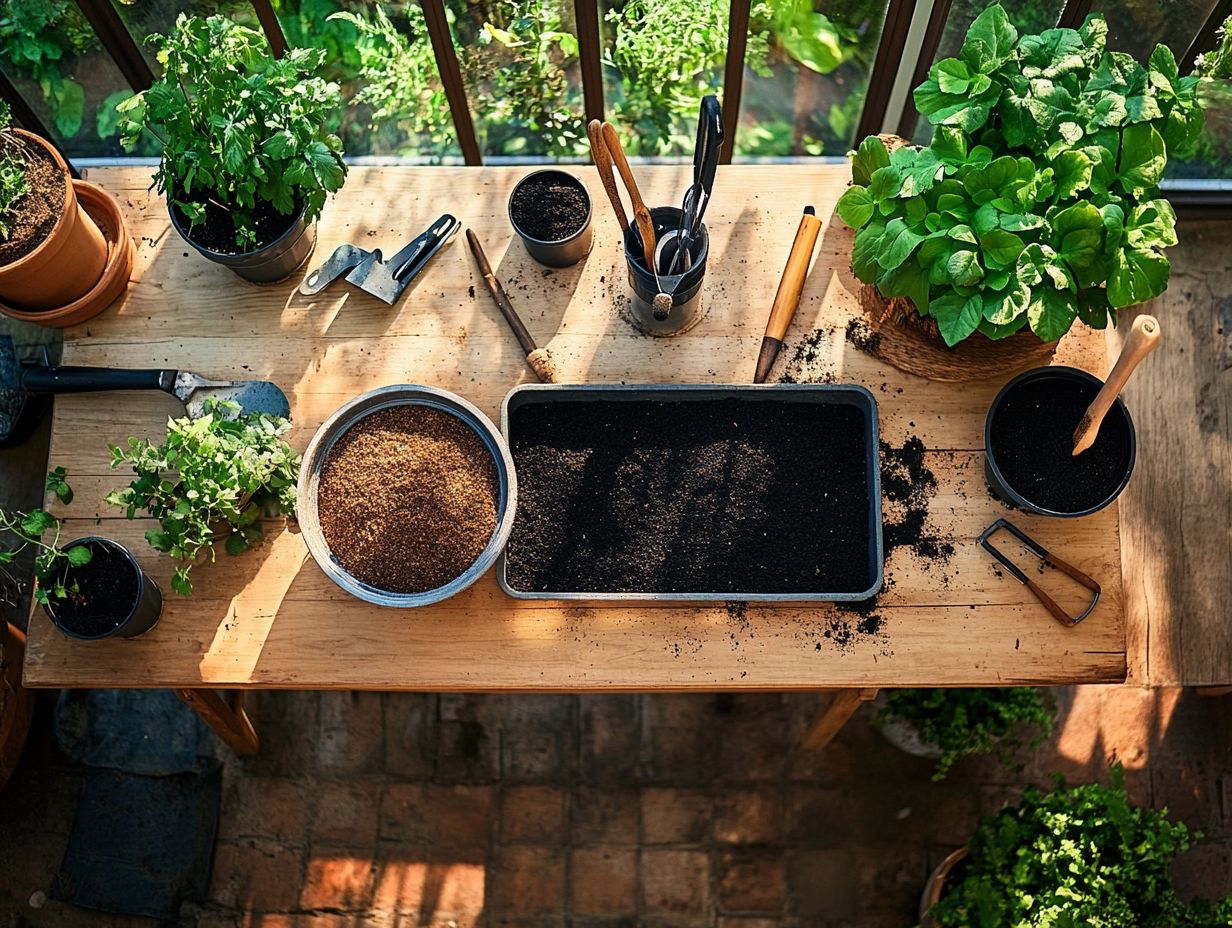
Measuring pH and nutrient levels is crucial for achieving optimal plant growth. It provides insights into the soil’s acidity and nutrient availability, which can easily be assessed with soil test kits.
These kits, often found at garden centers, include everything needed for a simple assessment. Start by collecting a soil sample from the potting media, ensuring it accurately represents the area of interest.
Follow the kit’s instructions to mix this soil with a specific amount of distilled water. Use the test strips or digital meters provided to measure pH and nutrient levels like nitrogen, phosphorus, and potassium.
Understanding these values enables you to make tailored modifications to your homemade potting media, ensuring it meets your plants’ specific needs and supports effective container gardening. This close attention guarantees lush, thriving plants!
Tips for Using Homemade Potting Soil
Transform your backyard gardening into a thriving paradise with nutrient-rich homemade potting soil. Ensure your soil remains nutrient-rich to optimize care for your houseplants and enhance your container gardening endeavors.
Storage and Maintenance Recommendations
Proper storage and maintenance are vital to ensuring your homemade potting soil remains in peak condition, preserving its quality and nutrient retention over time.
Consider key factors like moisture levels, temperature, and light exposure, as these significantly impact the longevity and effectiveness of your potting media. Store the soil in an airtight container or bin to maintain the ideal moisture level, preventing it from becoming too dry or overly soggy.
Keep your potting soil in a cool, dark place to protect its organic ingredients from the degrading effects of heat and sunlight. Regularly check for any signs of mold or pests. Mix the potting soil to ensure good aeration and even moisture distribution to keep your planting medium fresh and ready for action when the gardening season arrives.
Frequently Asked Questions
What are the benefits of mixing your own potting soil and using quality ingredients?
Mixing your own potting soil lets you tailor ingredients to your plants’ needs. It can save money in the long run and ensure your plants receive the best possible nutrients for optimal growth.
What materials do I need to mix my own potting soil?
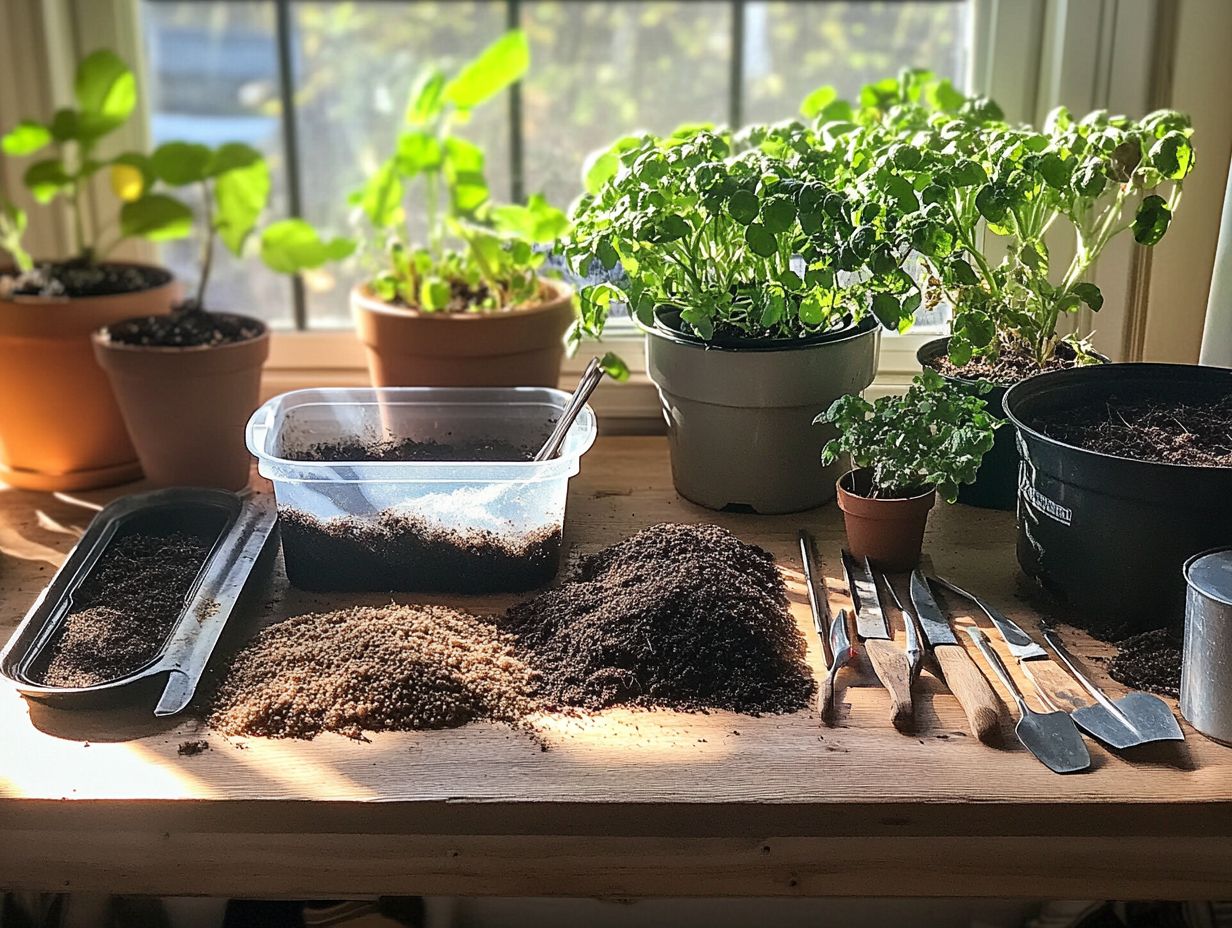
You will need a combination of organic materials, such as compost and a type of moss that helps retain moisture, along with inorganic materials like Perlite and Vermiculite, which improve soil drainage. A large container or wheelbarrow for mixing, as well as a measuring tool for accurate ratios, is also necessary.
How do I determine the right ratio of materials for my potting mix?
The ratio of materials will depend on the specific needs of your plants. Generally, a good ratio is one-third organic matter to two-thirds inorganic matter, which may include coarser texture for better aeration. You may also need to adjust the ratio based on the type of plant and the drainage needed.
Can I add fertilizer to my homemade potting soil?
Yes, you can add fertilizer to your potting soil mix. Use a slow-release or organic granular fertilizer to avoid burning your plants’ roots. You can also add nutrients from natural sources like compost ingredients or worm castings to enhance nutrient retention.
How do I mix the ingredients together evenly?
To ensure all the potting media ingredients are evenly distributed, mix them thoroughly. Use a large container or wheelbarrow to combine the materials, utilizing a shovel or trowel to turn and blend the mix until it is well combined for an effective potting mix.
Can I store leftover potting soil for future use?
Absolutely! You can store leftover potting soil in a sealed container or bag for later use.
Keep it in a cool, dry place to prevent mold or bacteria. Before using it again, you might need to add some water or organic fertilizer to refresh the soil.

